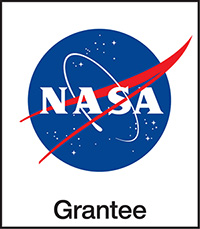Full Educator Guides
CONTEXT SETTING
ACTIVITIESCONTEXT SETTING
ACTIVITIES
ACTIVITIES
How to Teach These Units
Take a little time to prepare and get ready to teach. The pages linked below give you an easy-to-follow checklist and resources that get you prepared for facilitating PLANETS activities.
4. Hide and Seek: Finding Minerals
Learners work to distinguish between minerals using sight and/or sound.
Guiding Question
How can we learn what the surface of Mars is made of?
Activity Downloads
- 1
- 2
- 3
 Activity Timing
Activity Timing
10 MIN. Get Ready & Team Up
25 MIN. Detect Minerals Remotely
10 MIN. Reflect
45 MIN. TOTAL
Setup: Prep Time 35 min
- Print and cut materials.
- Set up Materials Table.
*See Materials & Preparation in the Educator Guide linked above for full info.
21st Century Skills
- Collaboration
- Communication
- Critical Thinking
Habits of Mind
- Innovate processes, methods, and designs.
- Investigate properties and uses of materials.
Learners Will Do
- Use a system of cellophane and mirrors to identify hidden symbols. Use scrapers to identify textures.
Learners Will Know
- Engineers can design technologies that enhance human senses.
Connecting Across Activities
- Activity 3: Redirecting Light: Last time, learners designed portable light redirection systems. These systems are one technology they can use when designing their complete remote sensing technologies.
- Activity 4: Finding Minerals: Today, they explore the use of filters and scrapers to gather more data, specifically about minerals. These tools are a second technology they can use when designing their complete remote sensing technologies.
- Activity 5: Taking Shape: Next time, they will design straw model LiDAR systems to gather data on a new subject: topography. These systems are a third technology they can use when designing their complete remote sensing technologies.
Level Up!
- Show the video Why Do Scientists Need to Measure Infrared Light?(5 min.)
- Scientists use filters to identify minerals on Mars. Minerals absorb specific colors of visible or invisible light. By using a filter that lets through only that color of light, minerals appear darker in images and can be identified more easily. To help learners better understand the concept of mineral reflection at different wavelengths, you can share images and videos about spectroscopy from the Activity resources page. (5+ min.)
- The Worlds Apart Science Pathway goes into more depth about how scientists use spectroscopy, a remote sensing technology, to identify minerals on other planetary bodies.
- It is not possible to scrape the surface of Mars from a distance. However, scraping can be useful up close: for example, Mars rovers can use drills to learn about rock hardness. Check out the one on the Perseverance Mission in the article “Testing Rocks on Earth to Help NASA’s Perseverance Work on Mars.” (10 min.)
- Refer to the Engineering Design Process poster (PDF). Ask: What steps of the Engineering Design Process did you use today? (Investigating how filters work; improving filters to make information easier to collect.) (5 min.)

